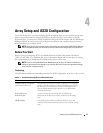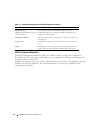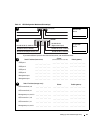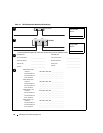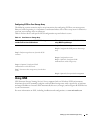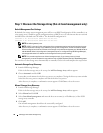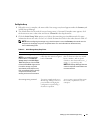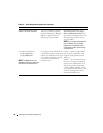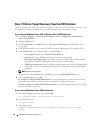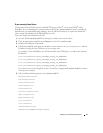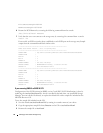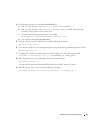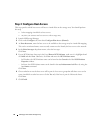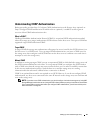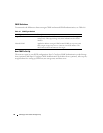
Setting Up Your iSCSI Storage Array 39
Step 2: Configure the iSCSI Ports on the Storage Array
By default, the iSCSI ports on the storage array are set to the following IPv4 settings:
Controller 0, Port 0: IP: 192.168.130.101 Subnet Mask: 255.255.255.0 Port: 3260
Controller 0, Port 1: IP: 192.168.131.101 Subnet Mask: 255.255.255.0 Port: 3260
Controller 1, Port 0: IP: 192.168.130.102 Subnet Mask: 255.255.255.0 Port: 3260
Controller 1, Port 1: IP: 192.168.131.102 Subnet Mask: 255.255.255.0 Port: 3260
NOTE: No default gateway is set.
To configure the iSCSI ports on the storage array, complete the following steps:
1
From MD Storage Manager, click the
iSCSI
tab, then select
Configure iSCSI Host Ports
.
2
Configure the iSCSI ports on the storage array.
NOTE: Using static IPv4 addressing is recommended, although DHCP is supported.
NOTE: IPv4 is enabled by default on the iSCSI ports. You must enable IPv6 to configure IPv6 addresses.
NOTE: IPv6 is supported only on controllers that will connect to host servers running Windows Server 2008.
The following settings are available (depending on your specific configuration) by clicking the
Advanced
button:
• Virtual LAN (VLAN) support
A VLAN is a network of different systems that behave as if they are connected to the same
segments of a local area network (LAN) and are supported by the same switches and routers.
When configured as a VLAN, a device can be moved to another location without being
reconfigured. To use VLAN on your storage array, obtain the VLAN ID from your network
administrator and enter it here.
• Ethernet priority
This parameter is set to determine a network access priority.
• TCP listening port
The port number the controller on the storage array uses to listen for iSCSI logins from host server
iSCSI initiators.
NOTE: The TCP listening port for the iSNS server is the port number the storage array controller uses to
connect to an iSNS server. This allows the iSNS server to register the iSCSI target and portals of the storage
array so that the host server initiators can identify them.
• Jumbo frames
Jumbo Ethernet frames are created when the maximum transmission units (MTUs) are larger than
1500 bytes per frame. This setting is adjustable port-by-port.
3
To enable ICMP PING responses for all ports, select
Enable ICMP PING responses
.
4
Click
OK
when all iSCSI storage array port configurations are complete.
5
Test the connection by performing a ping command on each iSCSI storage array port.



